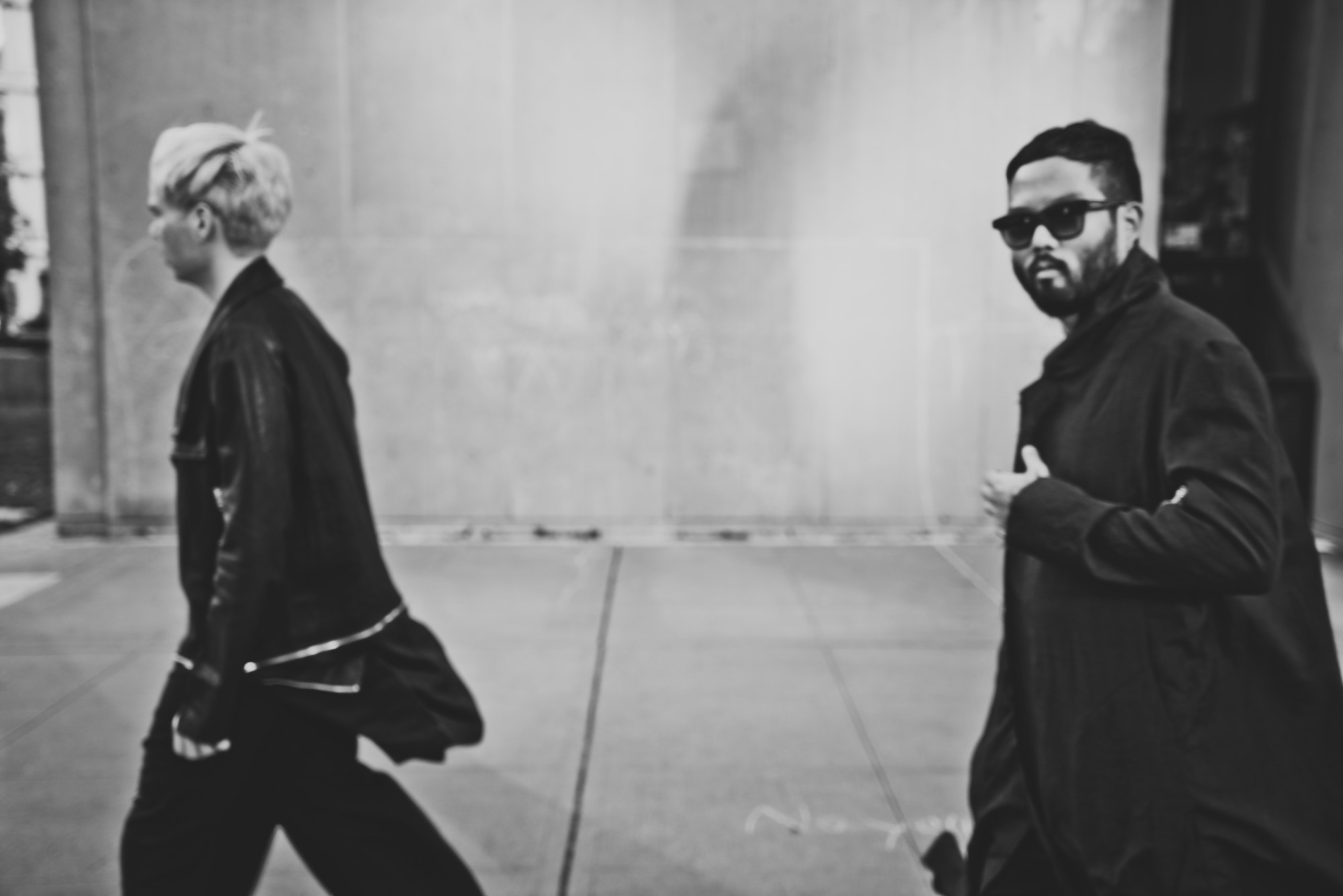In the last several years, with his dazzling cuts and evocative urban romance, menswear designer Siki Im has proven himself as one of New York City’s most provocative burgeoning talents. Born in Germany to Korean parents he studied architecture at Oxford before segueing into a career in fashion. Siki’s explicitly modern aesthetic, nurtured by his mentor, menswear guru and mega-stylist David Vandewal, is both cerebral and intimate. Inspired by everything from experimental writer Thomas Pynchon to American painter Georgia O’Keefe, his wayward concepts manifest as stunningly beautiful designs that are poetic in their intricate simplicity. Siki’s clothes are made with a stringent integrity that parallels his own fierce disposition. Never one to compromise, especially with the quality of his clothes, he has at times been considered stubborn, unruly, making few if any consolations to the status quo. But now, after several seasons under his belt and some confidence in his stride Siki has started to finally relax and open up.
So, how did you go from working as an architect to becoming a fashion designer?
Basically I moved to New York and was working as an architect and then had the opportunity to meet David Vandewal. He had come from Antwerp and needed an assistant. He liked what I was wearing and he liked me. We talked for two or three hours and he immediately offered me a job. And that’s how I started.
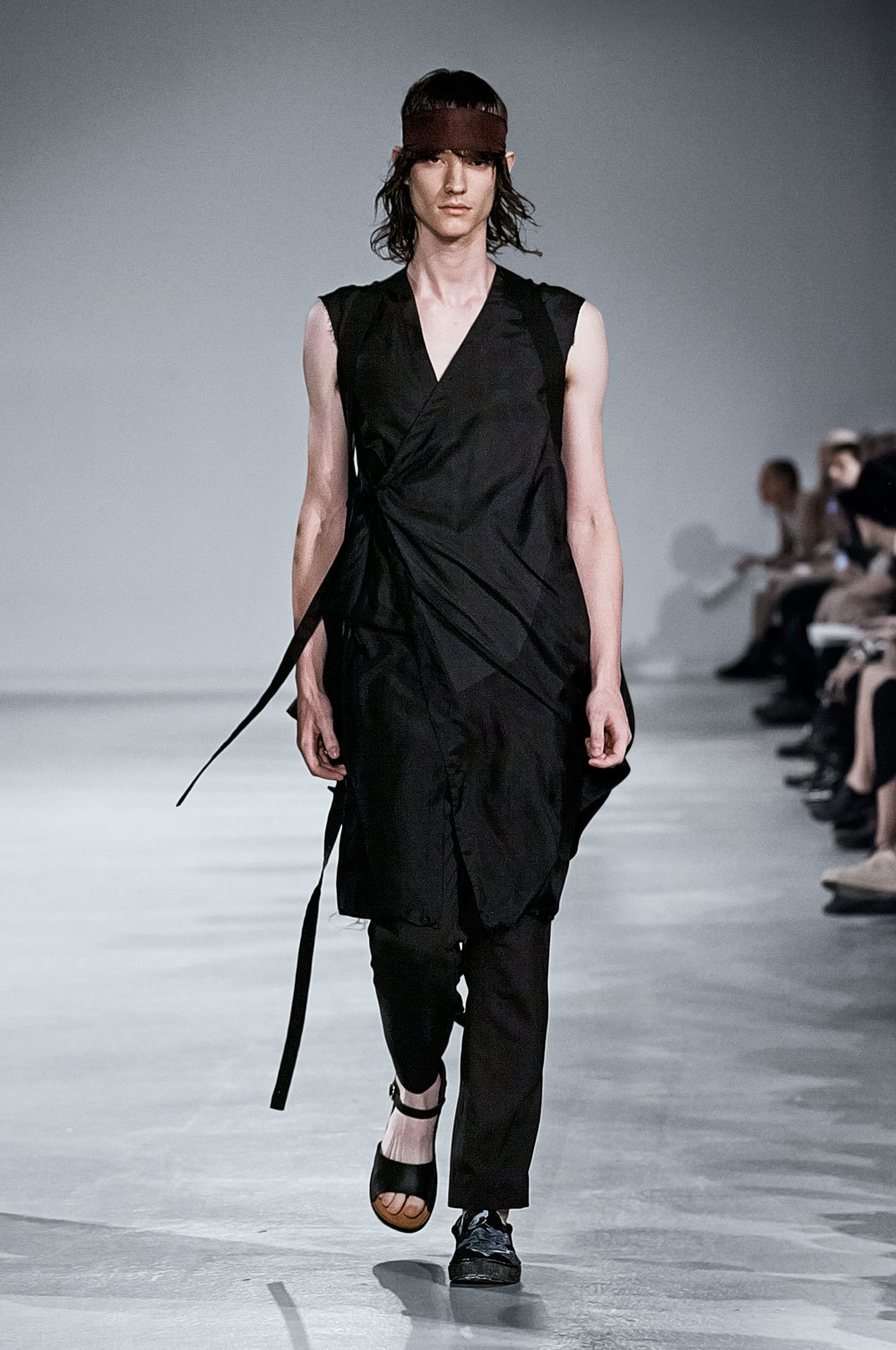
I always forget Vandewal was a designer before he was a stylist.
He was a designer for Raf and Dries, he was with Dries for like 10 years. He and I are very similar in how we feel about people and design, so it was super easy working with him. When I started my own line I asked him if wanted to work with me on that. So it’s been ongoing.
Before you started your own line you worked with Melanie Ward on Lagerfeld. How was that?
That was really amazing. Melanie is such a graceful woman, so mellow and polite and respectful and beautiful. She’s almost magical like an elf, queen of the elves!
She does kind of look like Cate Blanchett in Lord of the Rings…
No, better!
Of course, no offense to Ms. Ward. How was Karl?
He would be in the fittings, he would come maybe once a month. He was very different with the studio team than how he is in public. He’s a bit like your grandfather, very funny and always cracking jokes. And he’s so knowledgeable and curious.
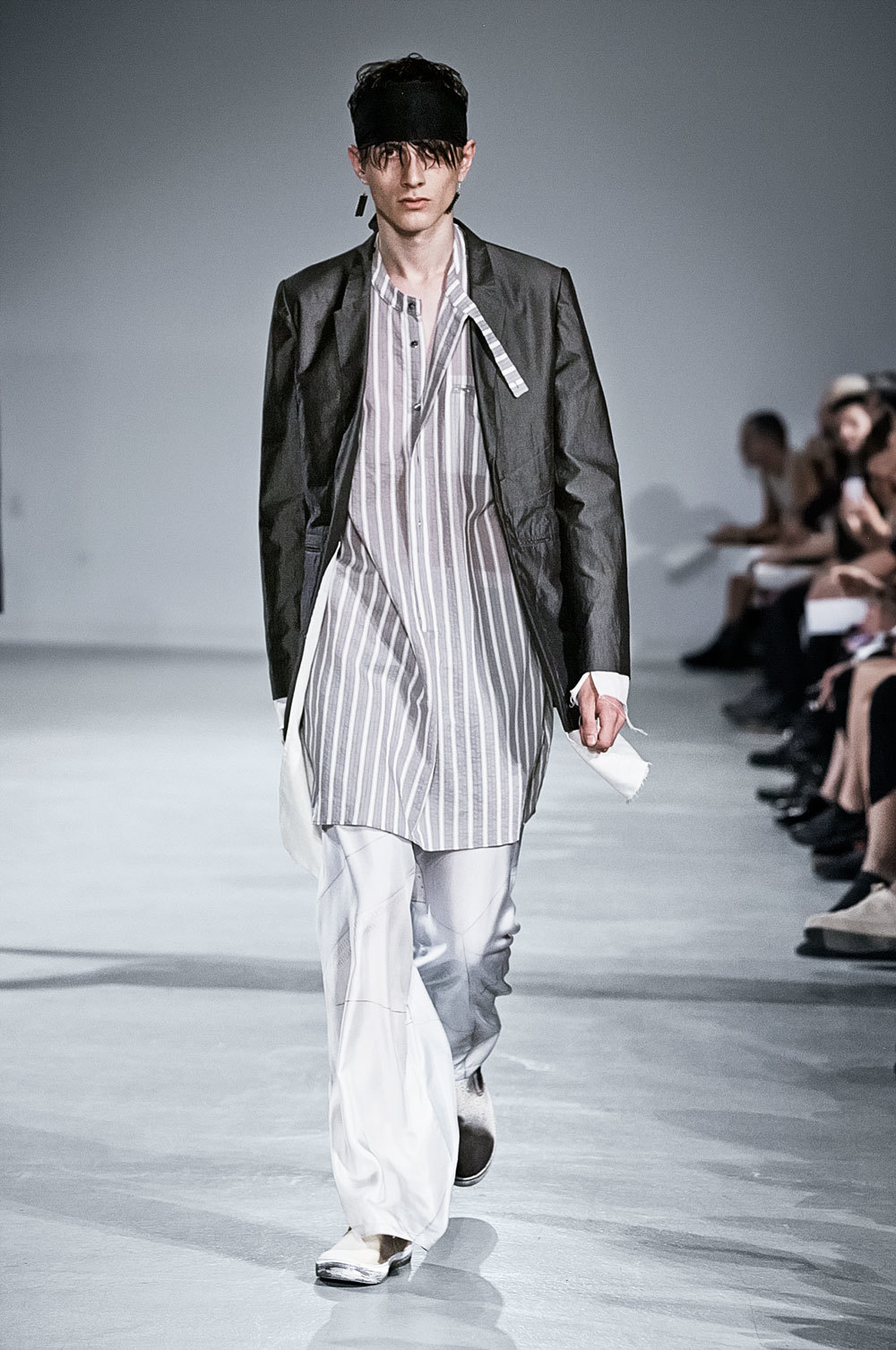
So was it hard going from architecture into fashion?
Not really. Architecture is really a science applied from notions of psychology and even spirituality. It deals with everything from gender to politics to economics. And it’s the same with fashion. It’s not just about clothes and fabric. There’s an intangible aspect to it. On one hand you want to make people feel something; sexy, cool, powerful, masculine, feminine, whatever. And then on the other hand you’re designing culture, it’s a story. And I think what interests me in the process is how to make certain things, what kind of constructions I use, what kind of seams do I use. I’m always thinking about how I can deconstruct or interpret different patterns.
I loved that your spring/summer collection was inspired by robots but ended up with these really soft clothes.
I collect model robots, I also love jets and airplanes and all those beautiful details. I thought it might be a little cheesy but I wanted to look into it for a collection. And then at the same time I was in Costa Rica surfing and I couldn’t use my phone. And that fear is actually really messed up, your phone is a like a modern robot and we’re dependent on it. I wanted the clothes to be free from that, it doesn’t have to be The Jetsons. So we took these natural fabrics and cut them in these geometric shapes and just let them fall.
It’s a really humanistic take on the future.
That’s the thing, we’re not machines, we’re not perfect and while I was working I thought “what’s the most wrong thing, the cheesiest thing I could do?” And I thought of tie-dye.
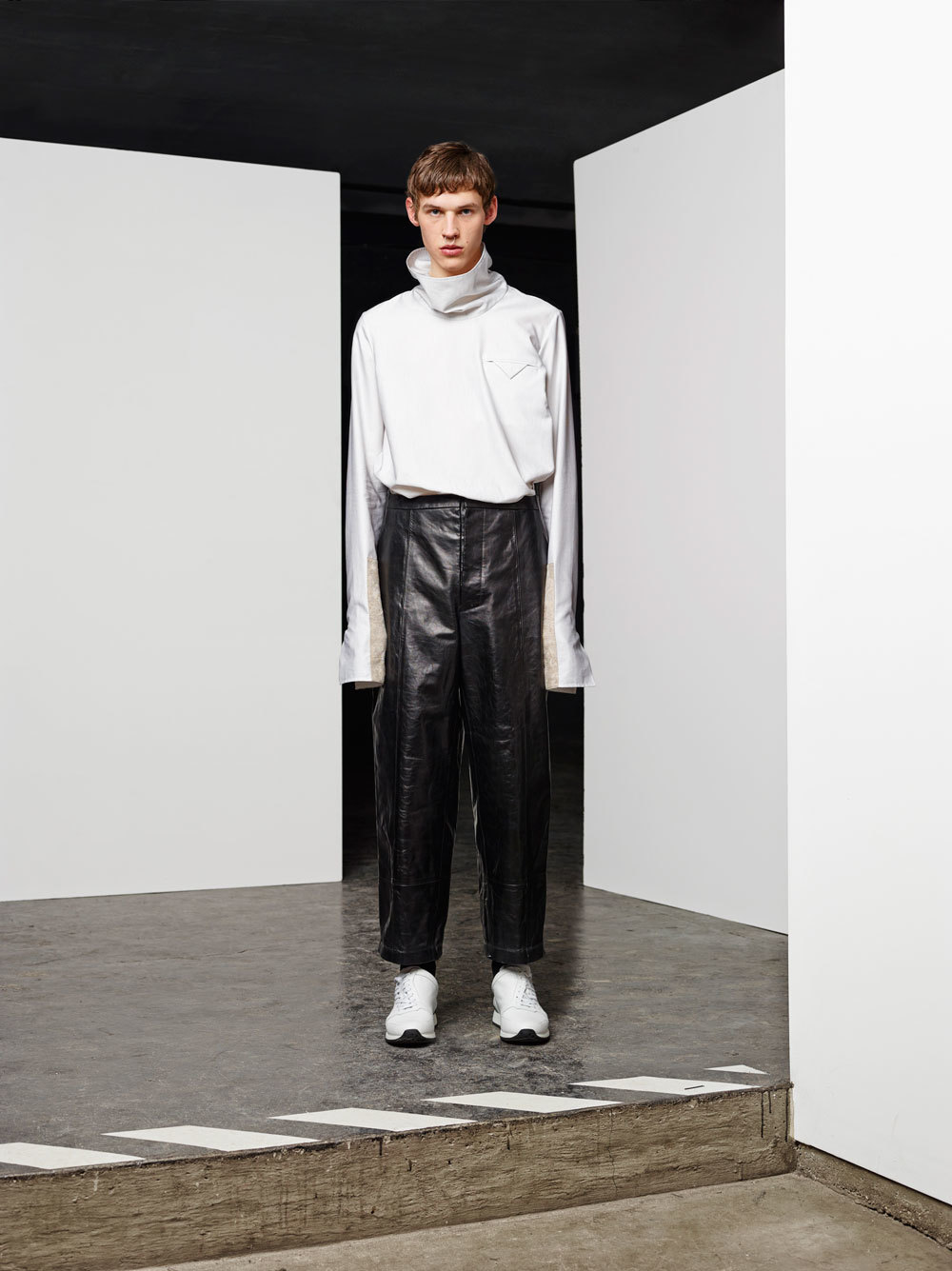
Totally!
For the record I’m not a Grateful Dead kinda guy. But it’s the most imperfect human print you can make. It’s the complete opposite of the perfect symmetry of a robot.
I know music is a big part your work, for fall/winter you went all and pretty much just staged a rock show.
Music is so personal to me, and I’m in a band and have almost always been in bands making music. I use music as an influence for mood and emotions rather than style. I’m not going to do a Jimi Hendrix inspired collection, but it is a very strong medium so it’s very important for our shows to have the right music. Autumn/winter was about the Lower East Side gentrification and we looked at the punk and hardcore movement that happened there. It’s the music I grew up with in Germany when I was a skater, bands like Youth of Today, Gorilla Biscuits, Warzone. I asked Walter Schreifels from Gorilla Biscuits to play, and he said yes! I think it gave a more emotional and direct experience which is so important to me.
What sort of bands were you in when you were younger?
Hardcore bands mostly, some punk bands, indie, emo, loud music. In college I was into weirder jazz influences. And now I’m in a band called Jvlivs/Erving. I’d call it modern shoegaze maybe?
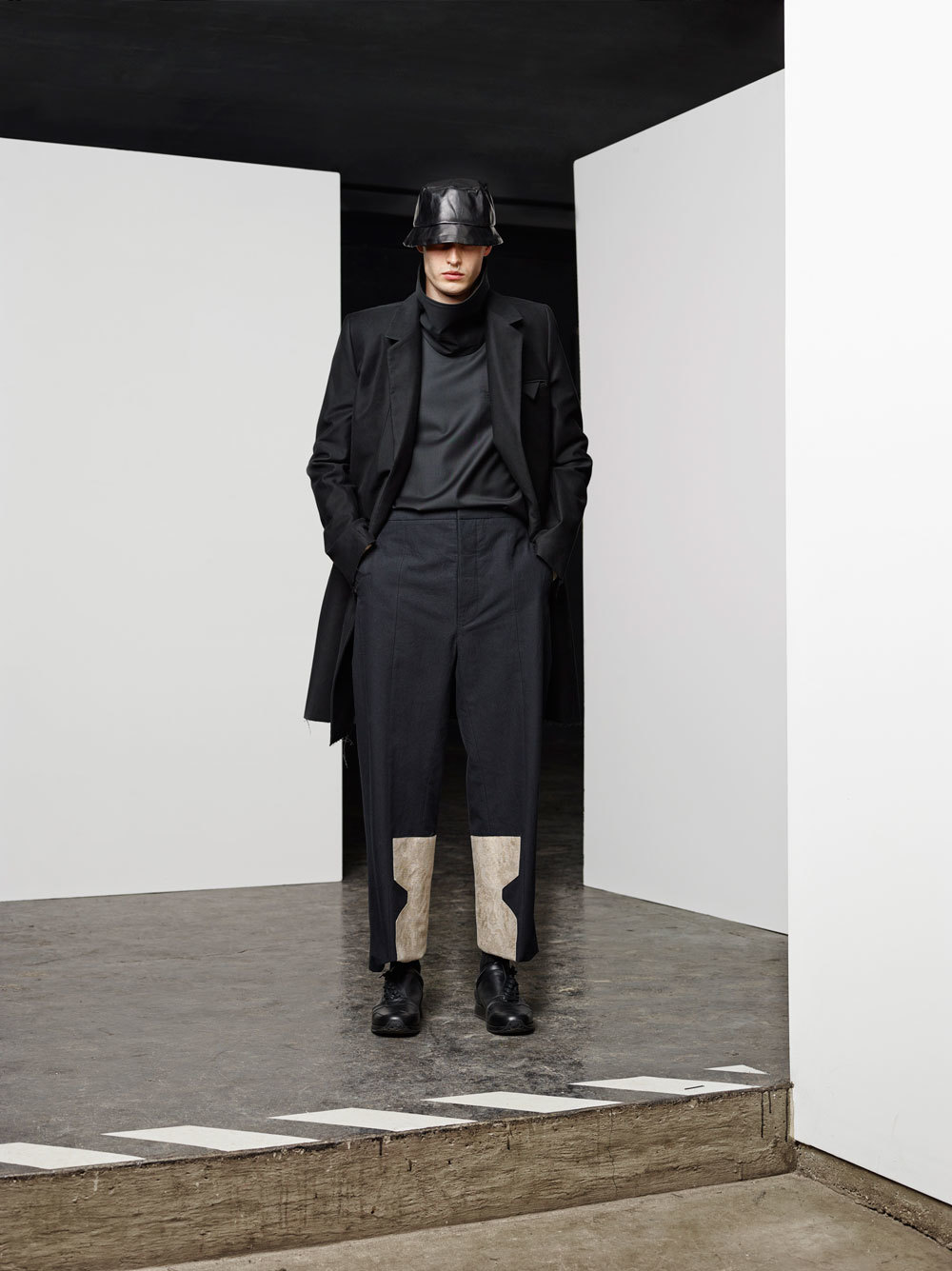
What’s the difference between what you get out of making music and making clothes?
The creative process is pretty similar. With my collection I’m looking into traditional clothes and trying to modernize them, it’s the same with music. I look into past music genres and modernize it with certain elements, juxtaposing certain motifs and try to bring them together and bring something new. We recorded an LP last year. I always merchandise the album. “Ok we need a couple of faster songs, we need a couple of slower songs…” and almost make a collection out it, like each song is a look in the story.
So, now that you’re a rockstar do have any groupies?
I wouldn’t tell. Some kids in Kansas City, maybe.
Credits
Text Jeremy Lewis
